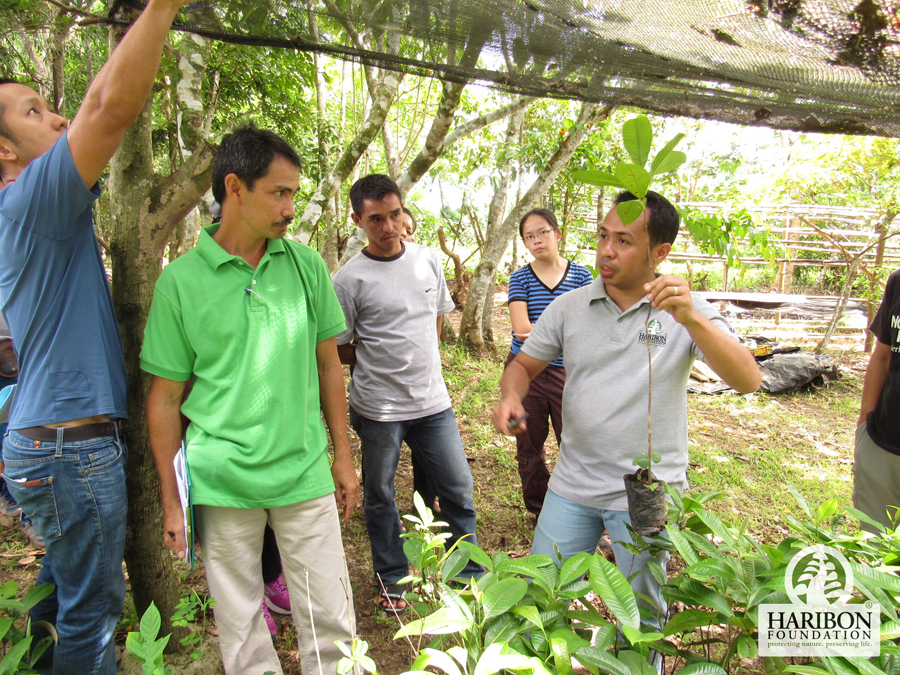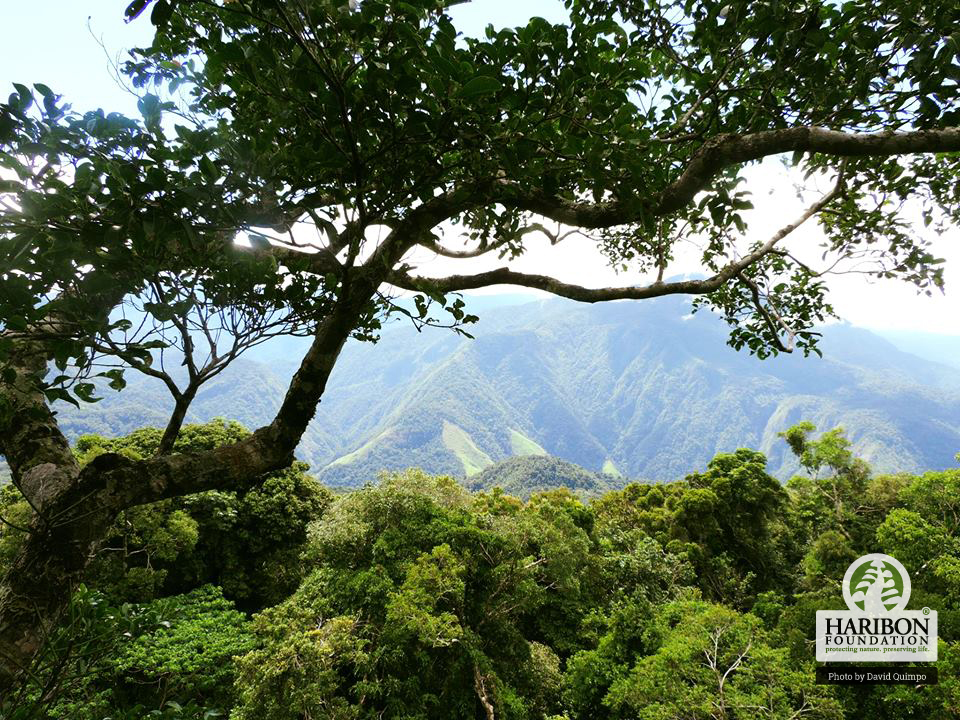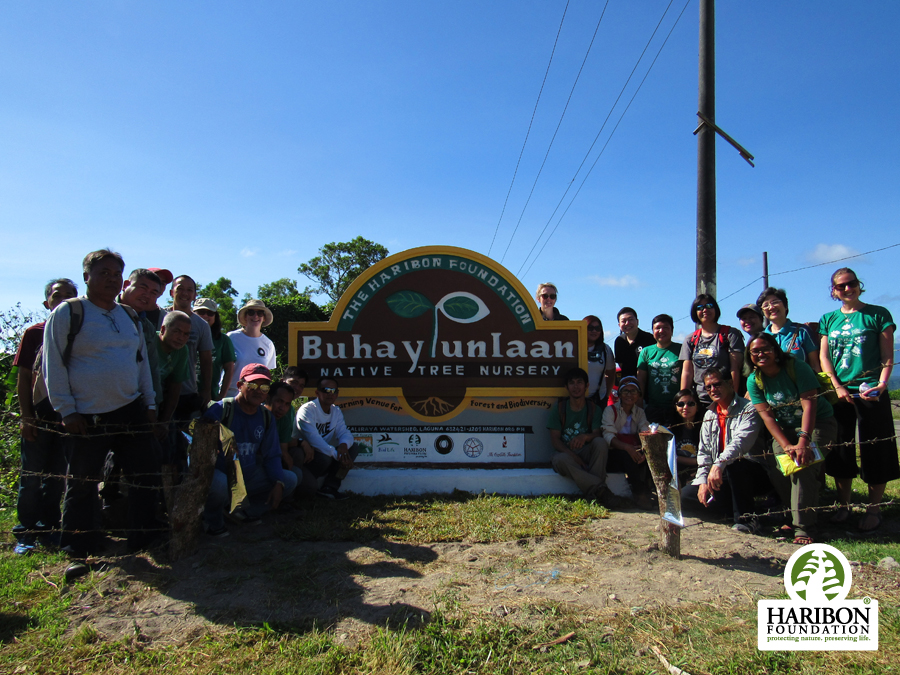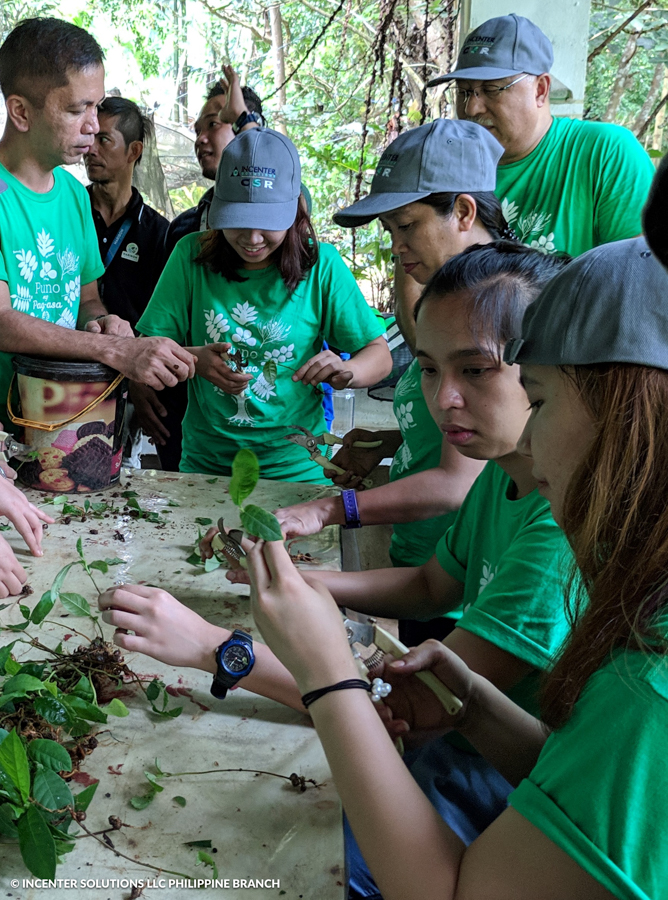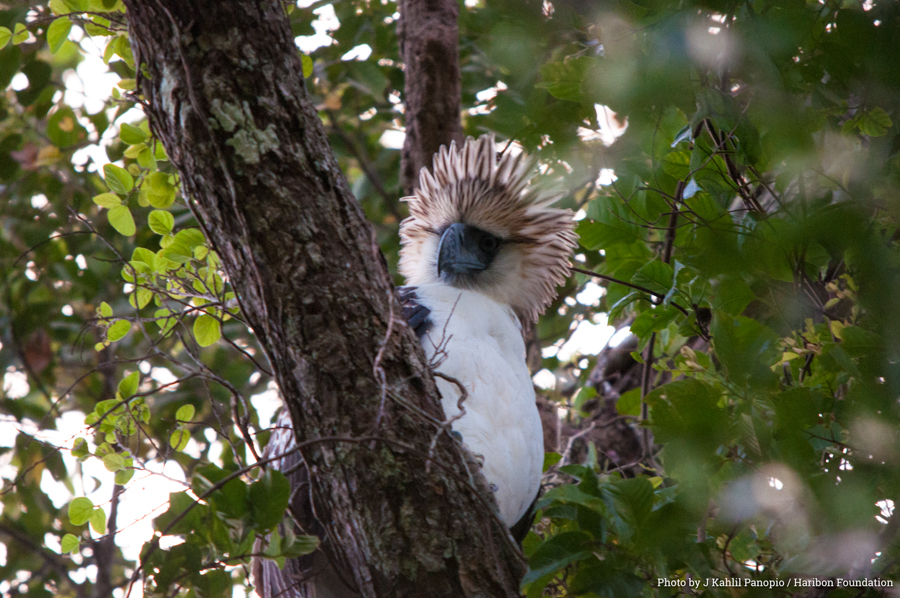During the 20th Century, the Philippines saw some of the most devastating forest loss in the world. If ours is to be the generation to bring it back, Buhay Punlaan is one of the means to accomplish it.
By Hazel Murray, Haribon Foundation
Not all scientists wear white coats and not all learning happens inside a classroom. Especially not if you are trying to rebuild the rainforest as the Haribon Foundation is currently doing. Buhay Punlaan, Haribon’s native tree nursery is a unique type of classroom where the teachers wear muddy boots and students really get their hands dirty. The aim of this nursery is to showcase ‘rainforestation technology’ in order to spread knowledge and skills so the Philippines can regain its lost forests.
During the 20th Century, the Philippines saw some of the most devastating forest loss in the world. In 1900 around 68% of the land area was covered in forest. However with the rise of logging concessions and the demand for hard woods on the global market, the country saw a drop of 35% by 1969.
This is mainly due to the Philippines being an open market during the Marcos era when the most intense logging was seen where an estimated 300,000 hectares were lost per year between 1965 and 1975. By 2003 the estimated forest cover had dropped to just 24%, according to the Department of Environment and Natural Resources (DENR).
Forest loss is not simply the loss of trees; they have been called ‘the lungs of the earth’ as they uptake carbon from the atmosphere and convert it to oxygen, they also help regulate global temperatures and they are a vital part of the water cycle. Forest cover also helps to stabilize soil and so reduces the chance of flooding and landslides and are home to huge numbers of endemic (only found in the Philippines) species of bird, mammals and insects.
But how do you rebuild a forest? “Carefully”, says Thaddeus Martinez, Forester for the Haribon Foundation who works at Buhay Punlaan in Lake Caliraya in Lumban, Laguna. “Rainforestation technology is about knowing the appropriate varieties of native trees that are naturally growing in a particular forest and providing seedlings the best chance of survival before allowing them to grow and thrive in the restoration sites.”
Essentially Buhay Punlaan is a native tree nursery where seedlings are planted and cared for before being replanted in denuded areas throughout the country. But why is it so important to have native trees? “Native trees have evolved together and with other organisms that are present in the forest, from the birds to the worms and fungus. By planting natives you are providing a home to all these species. Forests with a diverse mix of native trees are also more resilient to diseases,” he said.
But who is doing all this important work? Rainforestation also relies on education says Czarina Constantino, Training Specialist at the Haribon Foundation. “Without education on the importance of forests and the role of native trees, Haribon’s work would be much more difficult. We provide training for our Rainforest Organizations and Advocates (ROAD) to 2020 movement community partners, including People’s Organizations (POs), so they can reforest their own areas. When a PO plants a forest they are much more likely to work to protect it.”
Haribon began work in Buhay Punlaan in 2009, a two-hectare denuded area, part of the Caliraya Watershed managed the National Power Corporation. But Haribon have come a long way since then. Trees as high as 4-5 metres shade the path entering the site and lead you to the activity center. The flagstones are imprinted with the leaves of native trees- Narra, Antipolo, and Banaba and many more.
You can see the cool lake between the trees and the sound of bird song follows you as you walk through the forest. There are around 30 different species of native tree in this small area. The activity center refurbishment, signages and nursery beds as well as initial conduct of training programs on Rainforestation and Sustainable Agriculture have been funded by Macquarie Group, a global investment bank. Macquarie have been working with Haribon since 2011 and are passionate about the important work being done at the site and the way the message is multiplied through working at the grassroots level.
“Without the support of corporate partners such as the Macquarie Group, Buhay Punlaan would still be a two-hectare area of cogon grass, not the thriving rainforest and nature’s learning venue that it is today” says Arlie Endonila, Head of Constituency and Development Department at Haribon.
“We cannot restore the rainforests in the Philippines to a more sustainable level, without the support of these partners, local communities, volunteers, the national and local government, and the general public.”
-Arlie Endonila, CORDD Head.
Restored forest refers to the forest ecosystem recreated as close as possible to the original which existed at the site, with most of the structure and productivity matching that of the original biodiversity. In time, ecological processes and functions will match those of the original forest.
Since 2009, Buhay Punlaan has grown and maintained a yearly average of 30,000 native seedlings with 40 different varieties which have been planted at the site or at different restoration sites around the country.
Act. Make an Impact. To join Haribon’s Adopt-A-Seedling and Tree Planting Activities, call: +63 (2) 421-1209 and/or email: support@haribon.org.ph to make a donation today!
Hazel Murray is from the UK but she studied Geography and Politics at the University of Otago, New Zealand where she also gained her Master’s Degree in Social Geography which is when she came to the Philippines for the first time to undertake research in the Mount Kanlaon Natural Park in Negros. Having been captivated by the country she returned as the Education Officer for Coral Cay Conservation operating in Southern Leyte and is back for a third time with Haribon. In her free time she enjoys biking around the hills of Antipolo, trying all the delicious pasalubong her office mates bring in from various provinces and reading in the shade of a native tree.
